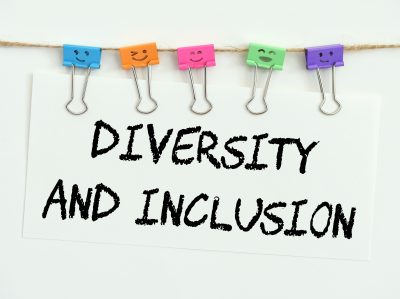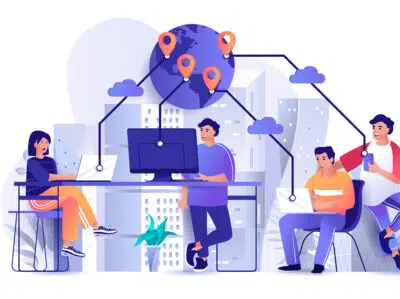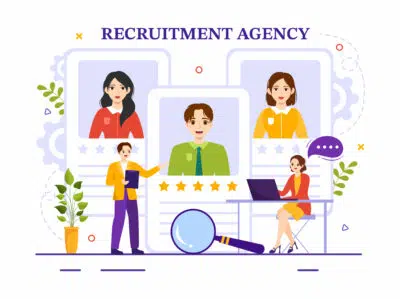Diversity and inclusion strategies will decide the future of brands. Are you ready?

Jobs 2023: Non-tech, 5G-fuelled telecom to dominate hiring
January 5, 2023
Budget 2023 | Salaried professionals expect more options for safe investments, tax reduction
January 18, 2023
It has been several years now since research revealed that a workforce consisting of people with varied backgrounds brings with it diverse talent, knowledge and experience. Companies that appreciate diversity and initiate measures to make underrepresented groups feel included reap a host of business benefits in the long run. Notwithstanding these proven advantages, implementing diversity and inclusion (D&I) at the workplace comes with the challenge of breaking down centuries of discriminatory practices and institutional bias and opening up minds accustomed to set ways of thinking. Now, however, a host of factors are inexorably driving the business world towards making its workforces diverse and genuinely inclusive, both as a moral imperative and as a must-do to survive in the future.
| Defining Diversity and Inclusion
Diversity is about representation at the workplace and inclusion is about the true acceptance of diverse representation, ensuring that everyone feels valued at the workplace… the challenge lies in nurturing inclusivity as a culture and tracking diversity as a measure of its success. |
|---|
Why D&I makes for a good business case
- The range of skills and knowledge that diversely composed teams bring to the table has an enormous impact on innovation as coworkers exchange ideas and learn from each other. Creative thinking and problem-solving capabilities receive a boost.
- The natural outcome of innovative thinking and a can-do attitude to work is increased productivity. Which brand does not want to see a healthier bottomline? Better productivity means that brands with a diverse and inclusive workforce produce better results in a shorter time span than competitors with a less diverse workforce.
A disabled company employee is explaining a computer program to a group of colleagues.
- A company that infuses its culture with diversity and inclusion is more in sync with its customers. How? Workers from varied backgrounds are better placed to promote business to customers who share similar backgrounds. Further, diverse teams learn from each other and understand how to craft appropriate approaches towards different customer groups.
- Studies show that when diversity and inclusion initiatives are meaningfully deployed, they benefit everyone, particularly in times of economic uncertainty. Building an organisational culture that makes everyone feel they belong unlocks people’s ability to adapt, tackle difficult situations and work unitedly in times of difficulty.
- Your recruitment needs are better served when the focus is on candidates’ skills rather than a preferred social grouping such as gender, class, colour, sexual orientation, physical ability, etc. When talent becomes the primary consideration for hiring, business is bound to improve and grow. Additionally, employees who feel respected and appreciated for their contributions make for a happier workforce and are less likely to leave the organisation.
Challenges to D&I
With such a wealth of proven business benefits, it would seem a no-brainer that the corporate world readily embraces diversity and inclusion. Unfortunately, changing social attitudes rooted in years of discriminatory practices and prejudice is hard work, and then some.
| Even relatively diverse companies face significant challenges in creating work environments characterised by inclusive leadership and accountability among managers, equality and fairness of opportunity, and openness and freedom from bias and discrimination.
(Diversity wins: how inclusion matters: McKinsey report 2020) Moving to authentic belonging is not easy. We tend to prefer those who are similar to us. But with increased awareness of our differences… We can support different channels of communication and different styles of work. This has nothing to do with compromising performance standards… It has everything to do with… creating environments where people can do their… best work – because they belong. Belonging is what makes diversity and inclusion work. |
|---|
And yet, notwithstanding the slow acceptance of workplace diversity, the business world may have now arrived at a tipping point. A host of forces beyond its purview are dictating that the time has come for brands to walk the talk on D&I.
Millennials and Gen-Z want to see a diverse workplace
A new generation of job seekers who are deeply aware of societal inequalities is calling the shots on how and with whom they want to work, and why they are willing to quit if their expectations are not met. In February 2021, The Washington Post, reporting on current business trends, stated:
“Millennials and Gen Z professionals are avoiding companies without a diverse workforce, a clear promotion track and a commitment to confronting systemic racism in their ranks.”
Deloitte’s annual survey of millennials and Gen Z employees sums up what these two generations of young workers expect from business leaders vis-a-vis diversity and inclusion:
“Prioritising work/life balance, learning and development, and well-being will be critical, as will… giving employees the opportunity to address societal issues through their work.”
The Deloitte study also reveals that a large percentage of this generation is unhappy about their employers’ commitment to diversity and inclusion, with 52 per cent of millennials and 57 per cent of Gen Z-ers surveyed saying they were “not satisfied at all”.
Of note to recruiters, the disillusionment expressed on this score also influenced these respondents’ loyalty to their employers, with 13 per cent of both Gen Z and millennial respondents stating that they were likely to quit their present employment within two years as a consequence of poorly implemented D&I policies at their workplace.
| Why does it matter what Gen Z thinks about D & I? “As companies take on ambitious business and societal goals, leaders must remember that employees can be a force multiplier or a detractor… research has found that the workforce is the number one risk to growth—and also the principal means by which companies can execute growth-driven strategies. Understanding workplace power in all its aspects can help leaders energise their workforce, tap into the power of their people and accomplish bolder goals.”
|
|---|
Gender identity will cease to be a criterion for employment
For a majority of companies in India, striving to build a diverse workforce primarily translates into hiring more women. In the future, however, gender-specific criteria for employment will lose their relevance. For example, the growing acceptance and support of LGBTQA+ individuals in workplaces—and the community’s own vocal demands for legislated rights—are changing stereotypical thinking towards sexual orientation and ushering in a greater understanding of gender fluidity. There is also a business case, with proven research, that companies which proactively encourage a high ratio of gender diversity have healthy work cultures and higher productivity too.
Remote working has altered timeworn perceptions
The flexibility that remote or hybrid working modes provide was an unexpected fallout of the pandemic. Importantly, these new ways of working have changed how companies can consider employees from underrepresented groups, such as people with disabilities or women professionals who drop out of work to take care of their families. A lack of disabled-friendly infrastructure or rigidly defined 9-to-5 work schedules now matters less, thanks to virtual modes of work and communication; recruiters need to take into account only a worker’s skills, experience and ability to deliver.
| Making D&I work: Strategies for success
Executives should set the agenda for D&I, making it a personal and company-wide commitment. Employee surveys can help to focus on undetected concerns and provide a space for people from diverse backgrounds to express themselves safely. Listening consciously to employees from marginalised backgrounds or minority groups engenders a sense of inclusivity and belonging. Such perceptions are deeply connected to motivation, positive behaviour, productivity and well-being. |
|---|
“Atypical” employees offer exceptional talents
Taking inclusion further, there is also growing appreciation of how neurodiverse individuals—people diagnosed with autism spectrum disorder or ADHD, for example—can contribute unique talents such as exceptional maths abilities or diverse thinking skills, which can significantly impact growth and productivity.
Age will be just a number
The generational composition of work teams influences how well they function. Going forward, successful brands will adopt this as a D&I initiative. Experienced employees will bring their accumulated knowledge to the business, while a younger generation will enable senior employees to adapt to new technologies.
Employers with a long-term vision need to consistently challenge established thought processes and ways of sourcing and retaining talent. As globally connected societies evolve organically and technology renders older ways of working obsolete, entrenched concepts about employment will fall by the wayside in the not-too-distant future.
Careernet’s diversity and inclusion-led solutions help transform organisations into multi-talented and strong workforces. We make it happen by sourcing the best talent from among women (including back-to-work programmes), people across regions and ethnicity, persons with disabilities, LGBTQ+ and veterans. Get in touch with us to know more about our expertise in D&I strategies.




